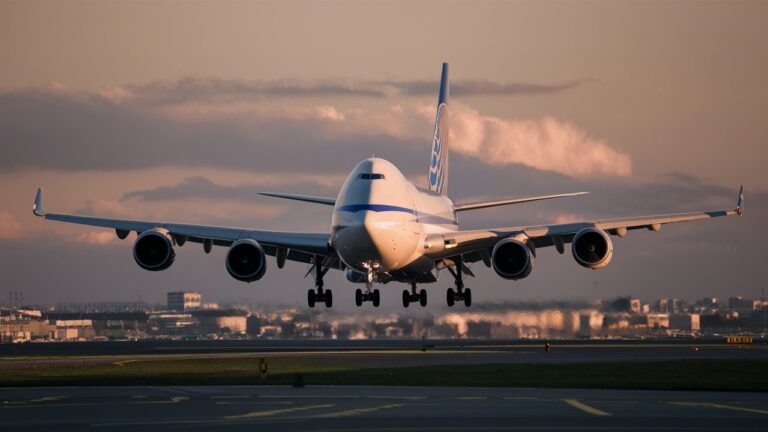Introduction
United Airlines Flight UA770 was cruising comfortably from Barcelona to Chicago on May 27, 2025, aboard a Boeing 787-9 Dreamliner. The routine journey was interrupted when a critical cabin pressurization alert—triggered by anomalous sensor readings—prompted the flight crew to declare a general emergency (“squawk 7700”) and divert to London Heathrow. The decision, driven by prioritizing safety, exemplifies how modern aviation systems, exemplary crew training, and well-rehearsed emergency protocols come together to protect lives—even when things go awry at 30,000 feet.
The Story Unfolds: Timeline & Critical Response
About 90 minutes into the transatlantic flight, the aircraft’s pressurization monitoring system signaled an issue: either a faulty sensor or a valve malfunction that risked cabin safety. The crew immediately alerted air traffic control and activated the transponder code 7700, signaling a general emergency. Within minutes, London Heathrow was designated the safest diversion airport due to its proximity and superior emergency handling facilities. The Boeing 787-9 proceeded with an urgent but controlled descent and touched down at Heathrow’s Runway 27R before taxiing to Gate B44, greeted by emergency services on arrival. Thankfully, no injuries were reported—passengers disembarked safely, and technical teams began a full inspection of the aircraft. This swift and calm response underscores aviation reliability in action. study-ar.comTravel And Tour WorldLight UE
Why Heathrow Was the Right Choice
Choosing Heathrow made strategic sense. As one of the world’s most equipped international airports, it offered extensive technical support, emergency services, passenger logistics infrastructure, and the runway capacity to accommodate a wide-body aircraft. The airport’s readiness made it the ideal location to prioritize safety and manage the incident efficiently. Light UETravel And Tour World
Pressurization Alert: The Trigger of Diversion
Early reports point to cabin pressurization anomalies as the root cause—possibly malfunctioning sensors or valve irregularities. Aviation safety protocols dictate that even an imprecise alert must be treated with utmost seriousness, triggering immediate descent and diversion to prevent escalation. UA770’s diversion reveals how built-in redundancies—real-time systems, monitoring alerts, and crew response protocols—operate effectively under pressure. study-ar.comTravel And Tour WorldLight UE
Crew and Passenger Response: Calm Amid Crisis
In the face of sudden adversity, UA770’s crew exemplified composure. Flight attendants maintained clear, reassuring communication, and the crew’s measured actions kept the cabin calm. Passengers, while initially startled, responded positively to the crew’s calm professionalism. Eyewitnesses described a tense descent followed by collective relief—and many later praised the clarity and preparedness of the cabin staff whose training and temperament made all the difference. study-ar.comLight UE
What Happened on the Ground: Logistics and Care
Upon landing, United activated its emergency protocols by coordinating medical and safety units for inspection. Passengers were assisted with rebooking, accommodations, and meals as needed—especially for those requiring overnight stays in the UK. The aircraft, meanwhile, remained grounded pending full inspection and maintenance clearance. United issued a public statement affirming that safety guided the diversion, recognizing crew professionalism and passenger cooperation while reaffirming its commitment to care. Light UETravel And Tour Worldtopspotmagazine.co.uk
What This Incident Tells Us About Aviation Safety
The UA770 diversion serves as a powerful case study in aviation resilience. Key takeaways:
-
Proactive detection systems can surface potential issues before they escalate.
-
Crew training and emergency readiness ensure swift, effective action.
-
Infrastructure readiness at diversion airports is crucial to manage crises.
-
Diversions reflect safety-first thinking—they’re data-driven cautionary measures, not panic responses.
-
Passenger assistance and communication are essential in minimizing anxiety and ensuring continued trust.
In 2025, diversions—even rare—highlight how airlines like United aviation continuously refine protocols, train personnel, and sustain a culture where safety always trumps schedule. Travel And Tour Worldlivetranslatehub.comCordless.io
Conclusion
United Airlines Flight UA770’s diversion to London Heathrow on May 27, 2025, was not a sign of failure—but a testament to aviation’s strength under pressure. From the prompt emergency declaration to the calm navigation and safe landing, all actions reflected a well-oiled system with one goal at its heart: passenger safety. While the original destination wasn’t reached, the flight landed precisely where it mattered most—safely. In modern aviation, that outcome is the true measure of success.
Frequently Asked Questions (FAQ)
Q1: What prompted the UA770 diversion?
A: A cabin pressurization alert—possibly due to faulty sensors or valve issues—triggered a precautionary emergency diversion to ensure passenger safety. study-ar.comTravel And Tour World
Q2: Was anyone injured during the incident?
A: No. The flight crew executed a controlled descent and landing with zero injuries reported. Passengers safely deplaned. study-ar.comTravel And Tour WorldLight UE
Q3: Why wasn’t UA770 allowed to continue to Chicago O’Hare?
A: Safety takes precedence. Once an emergency declaration is made, the crew must land at the nearest capable airport; Heathrow offered essential emergency support and infrastructure. Light UETravel And Tour World
Q4: What support did United offer after landing?
A: United provided rebooking, accommodations, meals, and further assistance to ensure passenger welfare during the unexpected stay. Light UETravel And Tour World
Q5: Do emergency diversions indicate unsafe flying?
A: Not at all. Diversions are precautionary—they show that alert systems and trained crews are working as designed to prevent risk. Cordless.iolivetranslatehub.com
